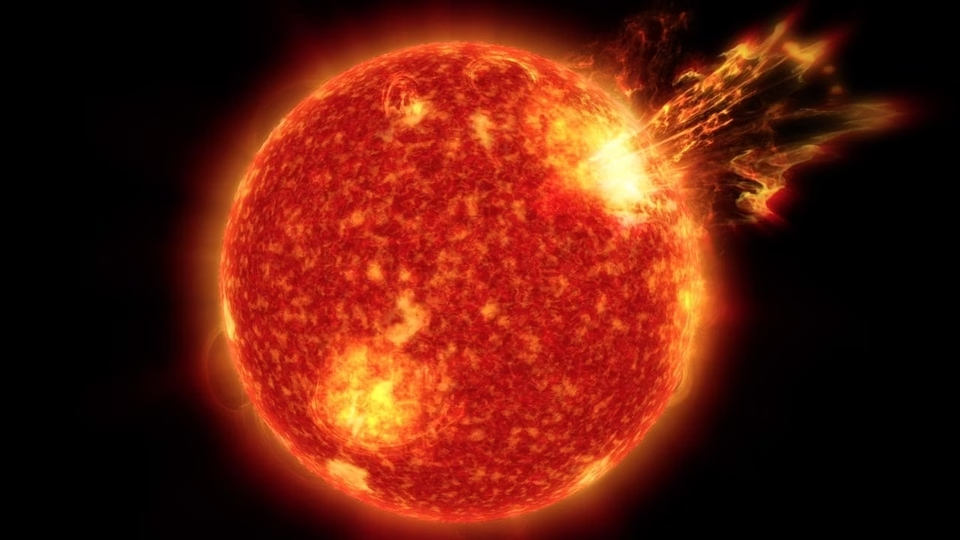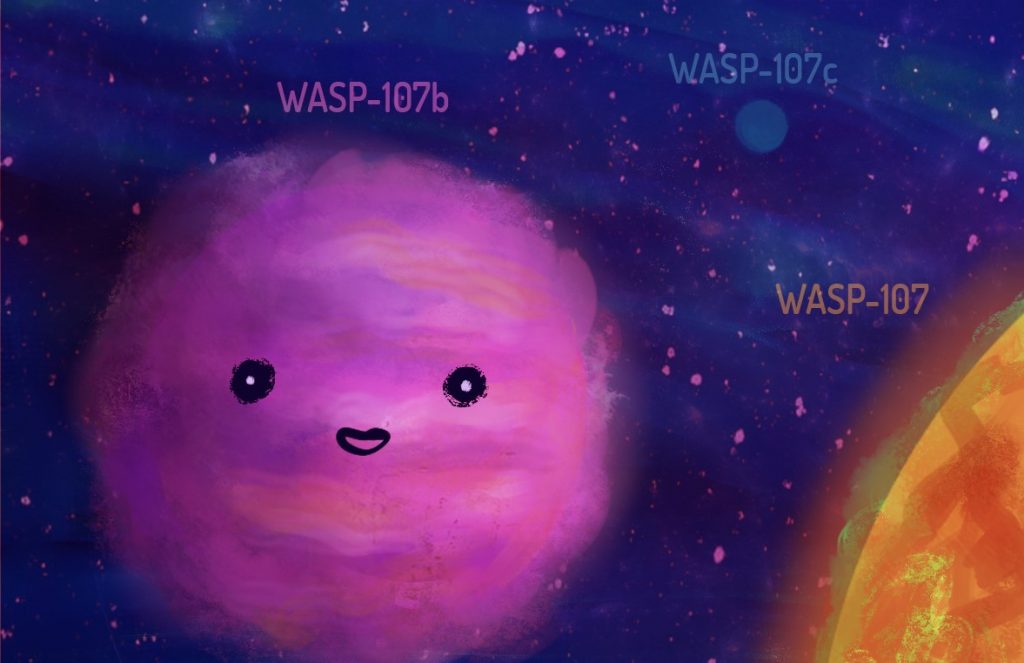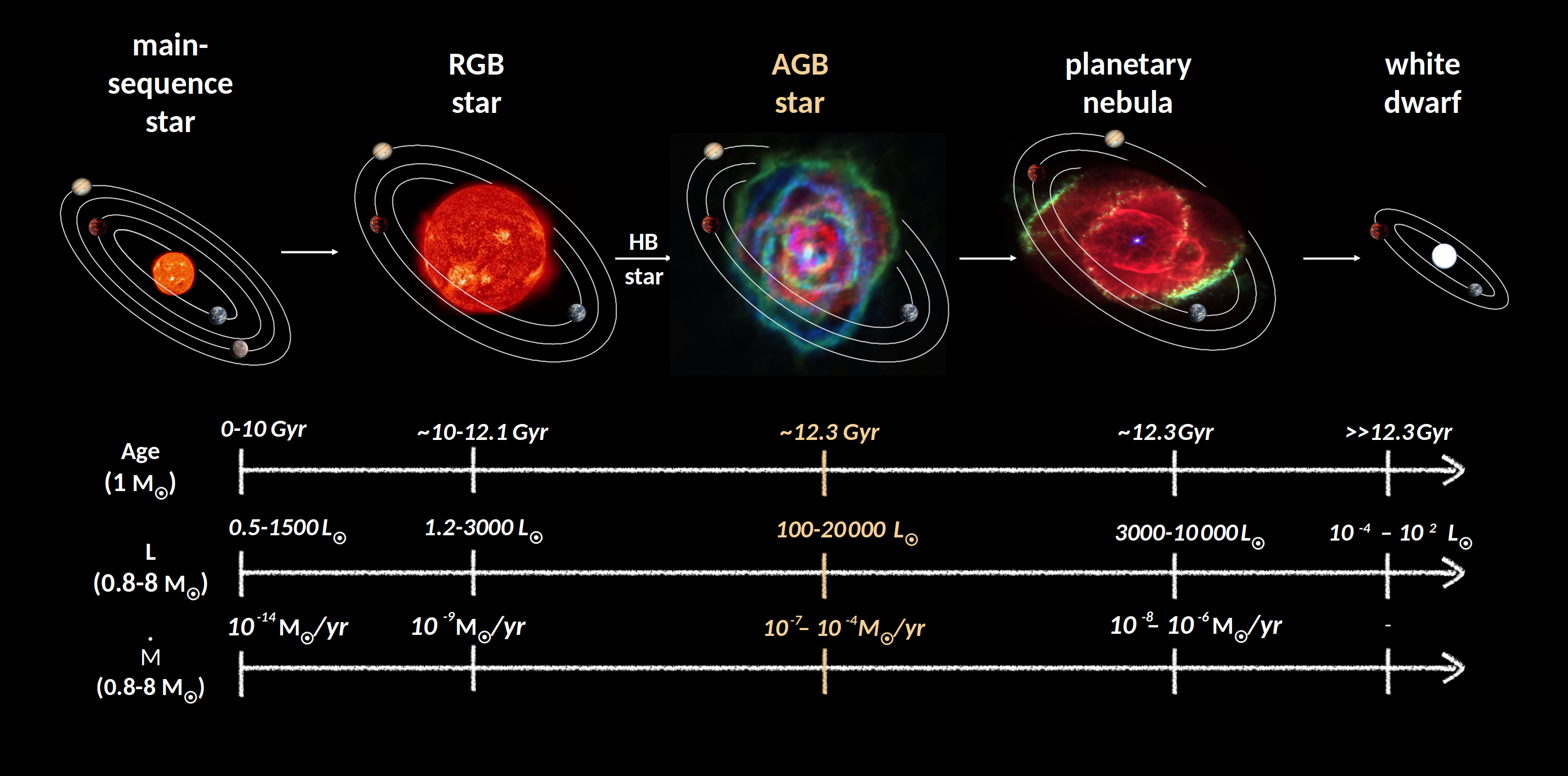Stellar flares of active M-type stars (or M dwarfs) can affect the atmospheric chemical composition of orbiting planets. Such variations in the composition can then change the observed signal, which in turn can bias the data analysis process (retrievals). We have investigated the effects of stellar flares on the chemical composition of a tidally-locked, close-orbiting gaseous planet with an effective temperature of 800 K and considered the impact on the transmission spectra. We use a two-dimensional thermo-and photochemical kinetics model that takes into account horizontal transport due to equatorial superrotation, the latter dominating the circulation patterns of such planets.
PhD Research & Publications
PhD research
The overarching goal of my PhD research is to better understand exoplanet atmospheres and how interactions with the star impact the physical and chemical state of the atmospheres. During my PhD, I have led or contributed to different projects.
The impact of stellar flares of hot gas giants
 A solar flare with accompanying Coronal Mass Ejection (CME). Credit: www.nasa.gov
A solar flare with accompanying Coronal Mass Ejection (CME). Credit: www.nasa.gov
Sulphur chemistry of WASP-107b
 Artist impression of the WASP-107 system with puffy exoplanet WASP-107b.
Credit: Daria Kiseleva / The McGill Tribune
Artist impression of the WASP-107 system with puffy exoplanet WASP-107b.
Credit: Daria Kiseleva / The McGill Tribune
As an affiliate of the European JWST MIRI GTO program, I helped with the analysis of WASP-107b, a puffy cool warm Jupiter, observed in transmission with the James Webb Space Telescope (JWST). By building a digital twin of it's atmosphere, we could simulate the chemical composition under different assumptions and compare this to the observed data. The retrieval analysis showed clear evidence for sulphur dioxide, which is best explained by a model that starts from a metal enriched atmosphere and is subjected to photochemistry induced by the host star. Furthermore, there was no evidence for methane, although its presence was expected based on our chemistry simulations. Several explanations were proposed, including a high C/O ratio, vertical mixing, high intrinsic temperature, or a high-altitude cloud deck, but further research is needed to confirm the origin of the missing methane.
Planets around AGB stars
The vast majority of planets that we have discovered, orbit main sequence (MS) stars like our Sun. Solar-type stars will eventually evolve off the main sequence and become asymptotic giant branch (AGB) stars, during which the star will increase in size, become much brigher and develop a strong stellar wind. The star's planetary system will likely be affected as the giant AGB star will induce tidal forces that can change the planetary orbits. Additionally, the extreme brightness will heat the planetary atmosphere and potentially change their chemical composition. Finally, the planet will be embedded in a strong and dense circumstellar environment. Within our research team at KU Leuven, we try to assess how the planetary atmosphere is affected by the latter through hydrodynamical modelling.
 Characteristic stellar parameters of solar-type stars throughout their evolution. Credit: Prof. Leen Decin and Thomas Konings
Characteristic stellar parameters of solar-type stars throughout their evolution. Credit: Prof. Leen Decin and Thomas Konings
Peer-reviewed publications
Here, I excluded conference proceedings and abstracts. For a full list of publications, please visit my ORCHiD page.
SO2, silicate clouds, but no CH4 detected in a warm Neptune
A. Dyrek, M. Min, L. Decin, J. Bouwman, N. Crouzet, P. Molliere, P. Lagage T. Konings, et al.,
Nature, 2023
3D simulations of AGB stellar winds. II. Ray-tracer implementation and impact of radiation on the outflow morphology
M. Esseldeurs, L. Siess, F. De Ceuster, W. Homan, J. Malfait, S. Maes, T. Konings, T. Ceulemans, L. Decin
Astronomy & Astrophysics, 2023
Impact of stellar flares on the chemical composition and transmission spectra of gaseous exoplanets orbiting M dwarfs
T. Konings, R. Baeyens, and L. Decin
Astronomy & Astrophysics, 2022
Grid of pseudo-2D chemistry models for tidally locked exoplanets - II. The role of photochemistry
R. Baeyens, T. Konings, O. Venot, L. Carone, and L. Decin
Monthly Notices of the Royal Astronomical Society, 2022